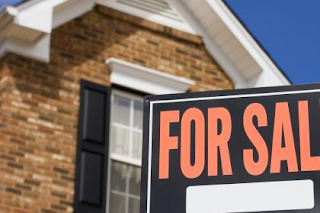Housing Market in Recovery
Our founder earned clients a 23% average annual return over five years as a stock analyst on Wall Street. "The Greek" has written for institutional newsletters, Businessweek, Real Money, Seeking Alpha and others, while also appearing across TV and radio. While writing for Wall Street Greek, Mr. Kaminis presciently warned of the financial crisis.
Housing Market Recovery
Looking at one of those, we discussed the Housing Starts data in detail in a report published on Wednesday. The government report offered mildly positive news for the housing industry, with Starts up 2.3% in August, but that growth was short of economists’ expectations. Also, looking forward, permits authorized for future housing starts declined by 1% in August, but met the economists’ consensus and were still 24.5% above the prior year level of activity. The shares of builders gained on the news and on the other data released Wednesday.
Homebuilder
|
Wednesday’s Change
|
Ryland Group (NYSE: RYL)
|
+5.7%
|
M.D.C. Holdings (NYSE: MDC)
|
+2.4%
|
NVR (NYSE: NVR)
|
+1.1%
|
Hovnanian (NYSE: HOV)
|
+1.6%
|
Lennar (NYSE: LEN)
|
+1.9%
|
Beazer (NYSE: BZH)
|
+6.2%
|
Meritage (NYSE: MTH)
|
+2.5%
|
Existing Home Sales data were the real catalyst for stocks Wednesday, driving even the SPDR S&P 500 (NYSE: SPY) higher, before it gave back ground in the last several minutes of trading. Sales of existing homes jumped 7.8% in August to their best pace in two years and well ahead of economists’ expectations. Growth was indiscriminate, reaching higher by nearly equal degree across the geographical markets of the Northeast, Midwest, South and West. The report signaled that the health of the real estate market had improved substantially. The median price of a home nationally was up 9.5% against the prior year, and marked solid month-to-month increase as well. Inventory was down, as was the percentage of distressed sales to the total. The news was so enthusing that it lifted stocks across the real estate sector, including mortgage lenders, title insurance providers, mortgage insurance providers and peripheral suppliers of construction materials.
Company
|
Wednesday’s Change
|
Bank of America (NYSE: BAC)
|
+0.7%
|
Citigroup (NYSE: C)
|
+0.7%
|
PNC Financial (NYSE: PNC)
|
+0.7%
|
SunTrust Banks (NYSE: STI)
|
+1.2%
|
PHH Corp. (NYSE: PHH)
|
+2.6%
|
MGIC Investment (NYSE: MTG)
|
+1.9%
|
Radian Group (NYSE: RDN)
|
+6.4%
|
Home Depot (NYSE: HD)
|
+1.0%
|
Lowes (NYSE: LOW)
|
+1.4%
|
USG (NYSE: USG)
|
+1.7%
|
The latest Weekly Applications Survey was published by the Mortgage Bankers Association (MBA) Wednesday morning as well. It showed mortgage activity held about steady in the week ending September 14. The real good news was found in its measurement of mortgage rates, which mostly declined in the period. The Existing Home Sales Report had shown a slight increase in average contracted mortgage rates in August. However, the latest quantitative easing program by the Federal Reserve is expected by most to lower rates even further.
It would be a little premature to expect to find any impact from the Fed announcement or mortgage backed securities purchases in this week’s data, but coming weeks could be affected. Still, rates on 15-year fixed rate mortgages reached a historic low in the latest period, dropping to 3.03%, and the average rate for FHA sponsored 30-year fixed rate mortgages held at its historical low of 3.5%.
On Tuesday, the National Association of Home Builders (NAHB) reported its Housing Market Index (HMI). The HMI is a measure of homebuilder sentiment, and has been deeply underwater for quite some time now. A mark under 50.0 for the HMI signifies that more builders view the state of homebuilding negatively than positively.
For the fifth straight month, the HMI improved, this time by three points to a mark of 40. It does not seem like good news, considering the index remains 10 points short of breakeven, but consider that it has not been this high since June of 2006. The best of the good news is that sentiment is improving across measured factors. The component index measuring current sales conditions improved four points to 42; the component measuring expectations for the next six months improved by eight points to 51; and finally, the component measuring the traffic of prospective buyers increased by a point to 31. Regionally speaking, the Midwest and West led with five point gains to 40 and 43, respectively. The South recorded a four point gain to 36, and the Northeast took back two points to 30.
So there you have it, four data points illustrating an improving real estate sector. It’s quite ironic that the real estate sector is improving just as the economy seems to be deteriorating, as traditionally, real estate has been a key catalyst of economic growth. It may just be that because of the structural changes of homeownership, with mortgage loans harder to qualify for, and given the still underemployment burdened economy, real estate doesn’t have the power to drive us higher by itself currently. Also, what has been a catalyst for growth of our economy more recently, the global marketplace, is currently dysfunctional and burdensome, at least in part. The usual intangibles, like geopolitical threats, are as scary as they ever were. Because of these issues, the vulnerability of our economy, and the cyclical nature of real estate, I remain concerned that this nascent housing strength could be quickly undermined.
Please see our disclosures at the Wall Street Greek website and author bio pages found there. This article and website in no way offers or represents financial or investment advice. Information is provided for entertainment purposes only.
Labels: Editors_Picks, Editors-Picks-2012-09, Real-Estate, Real-Estate-2012-Q3



























